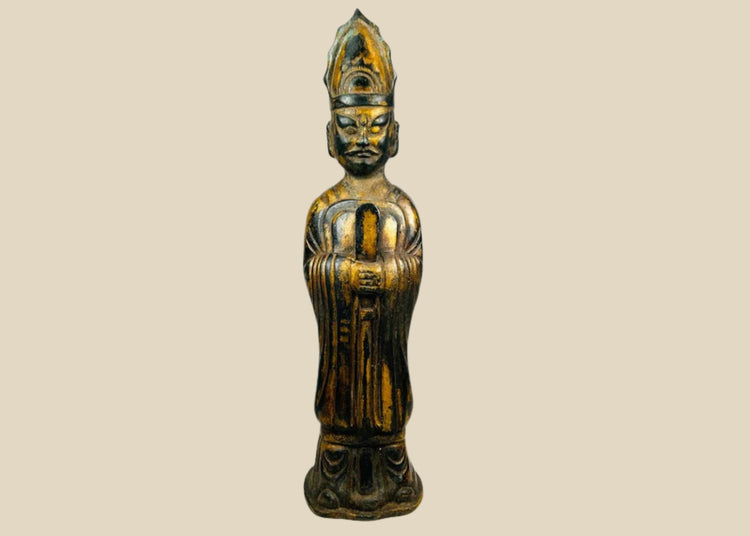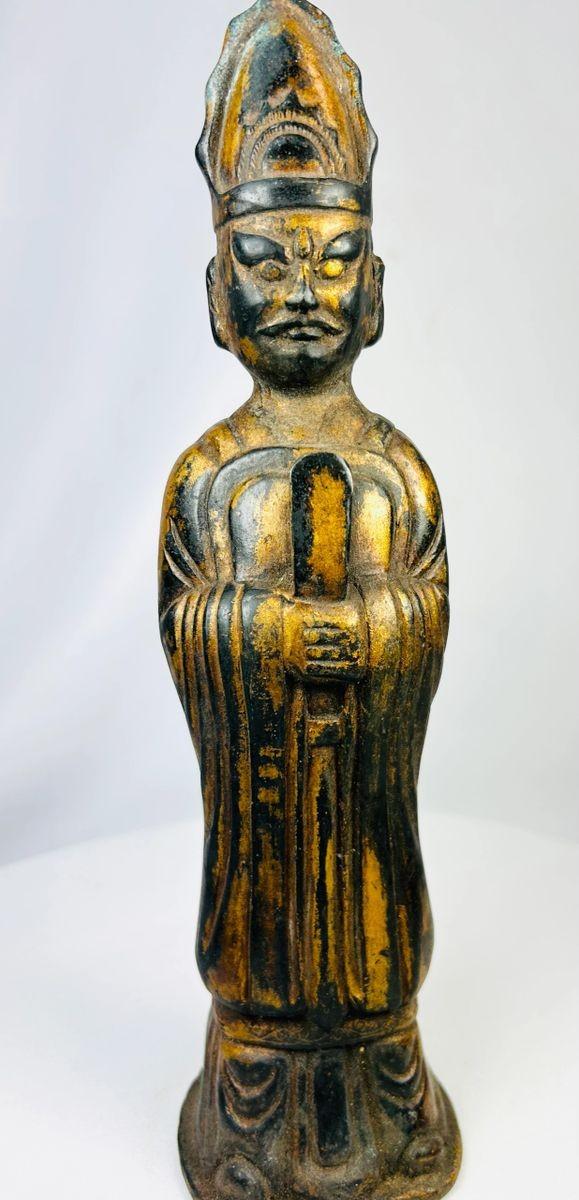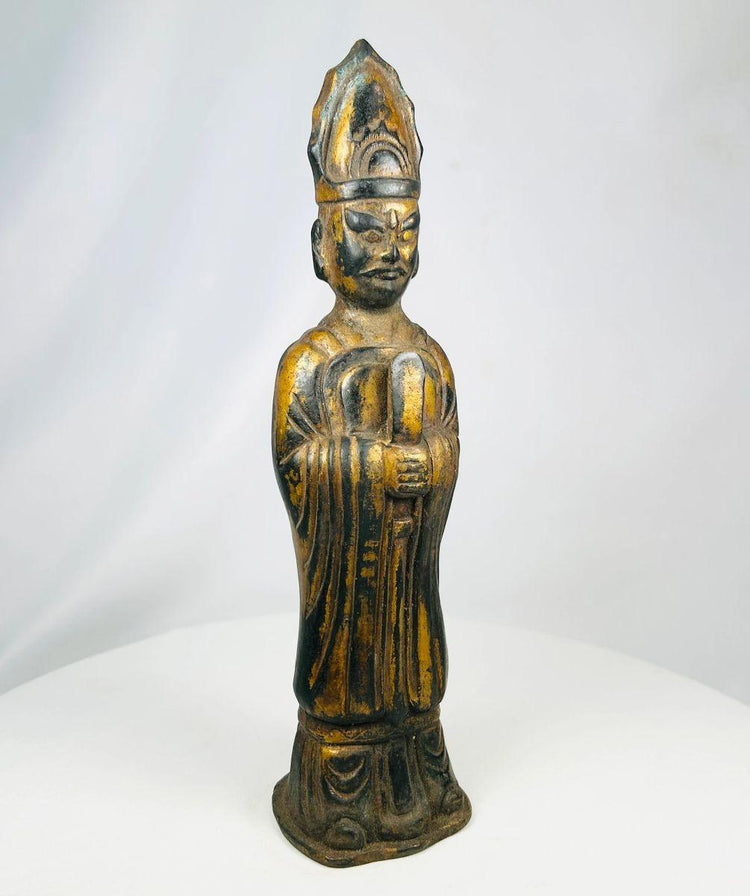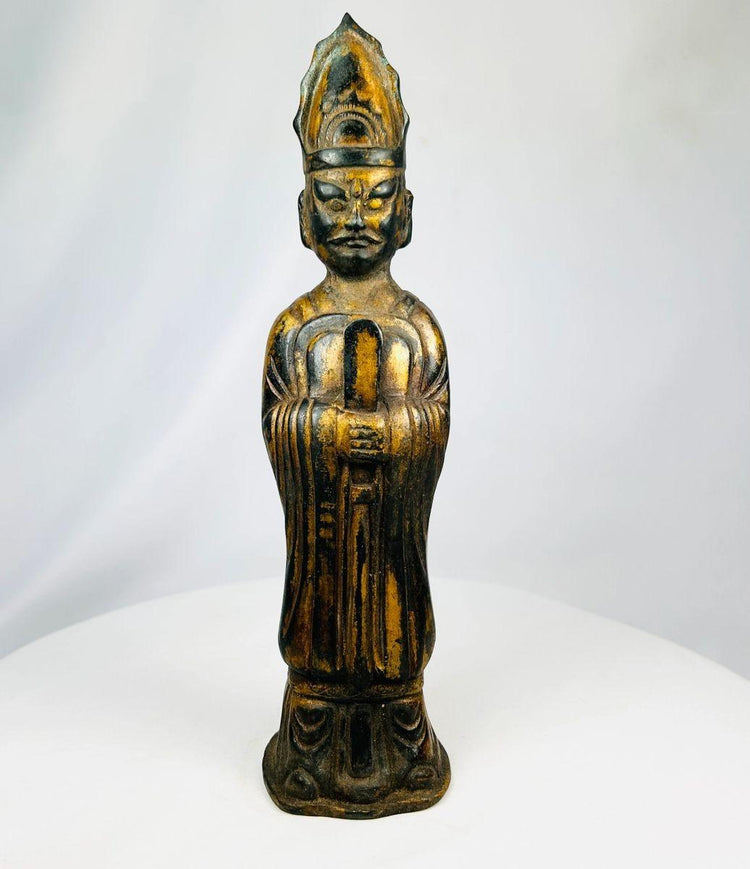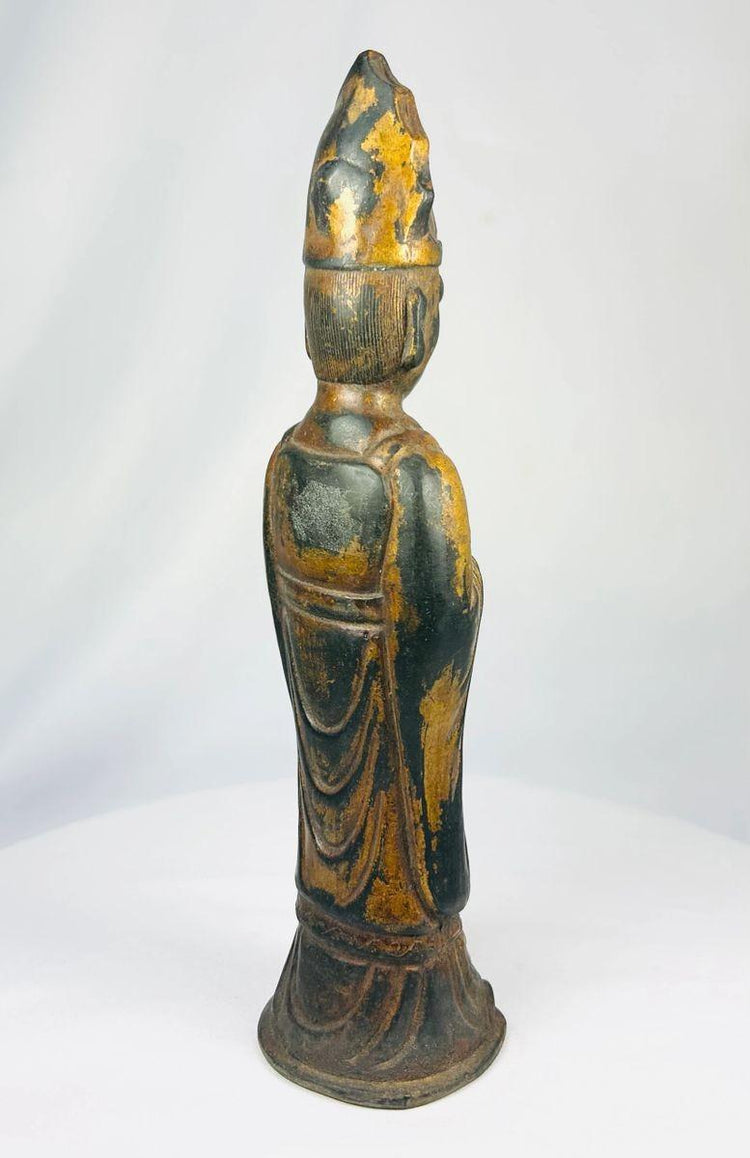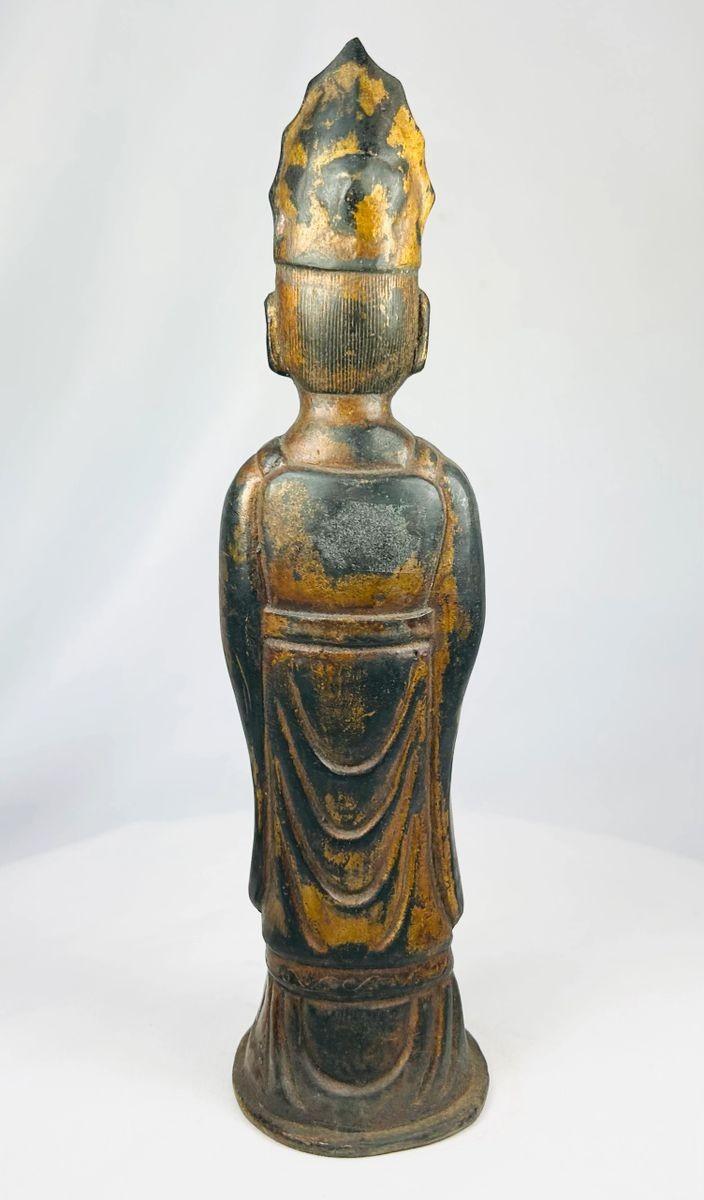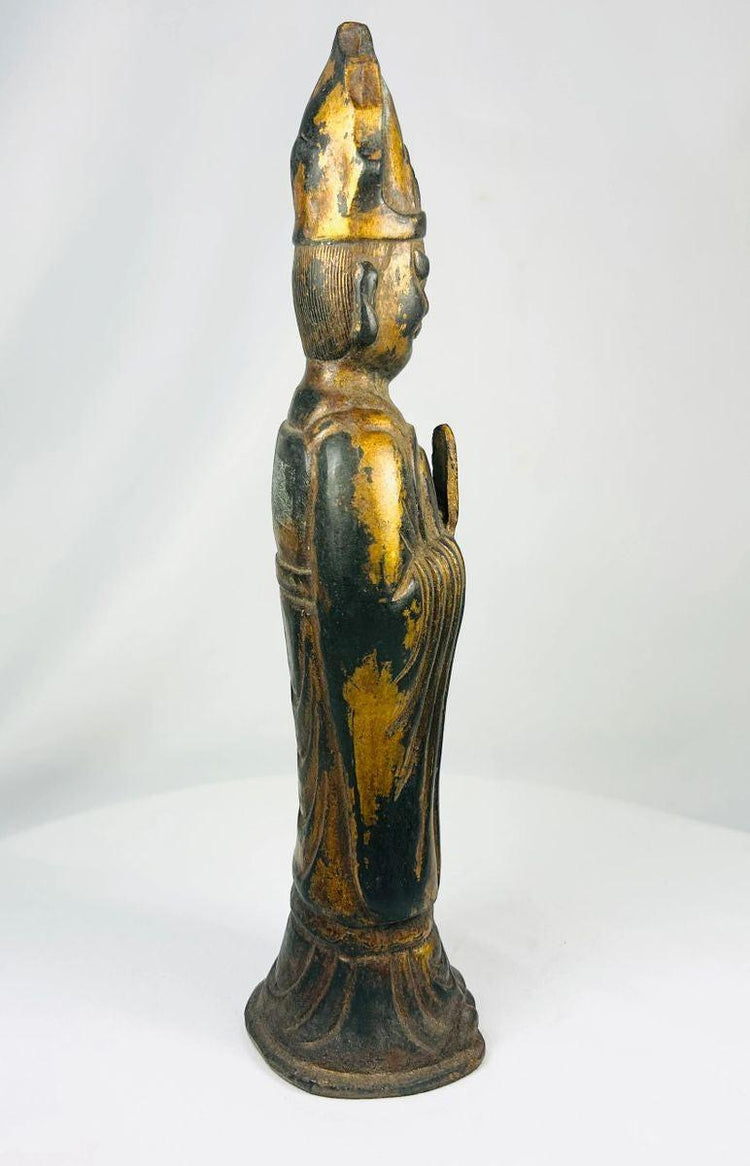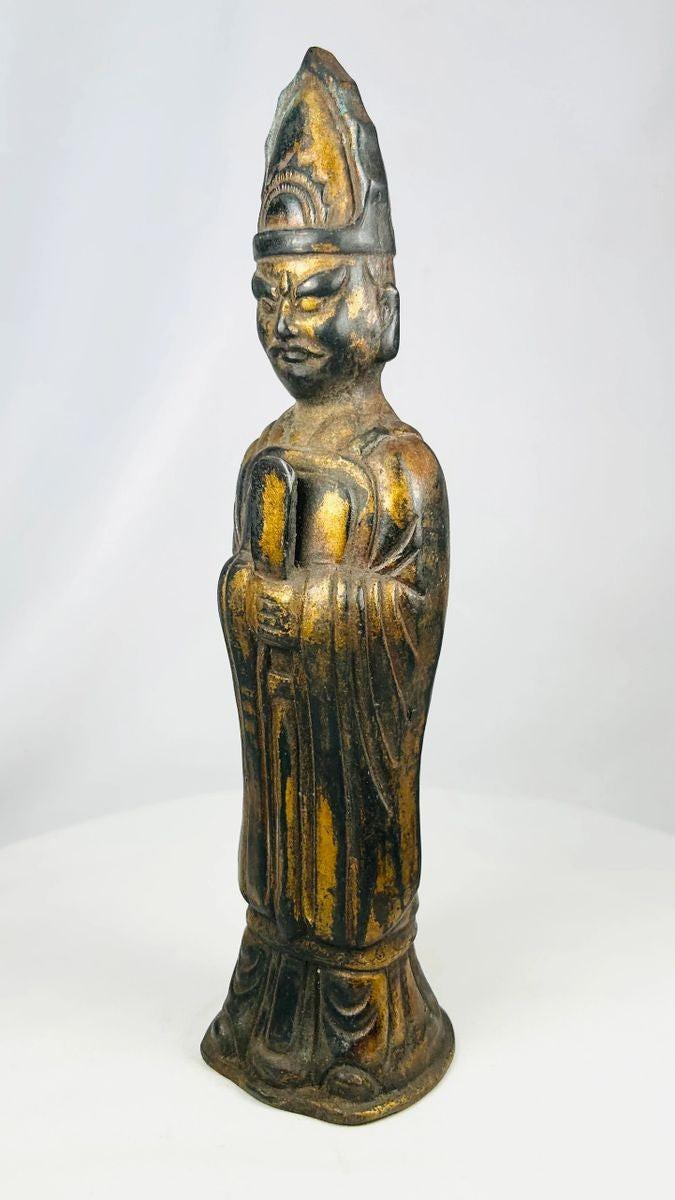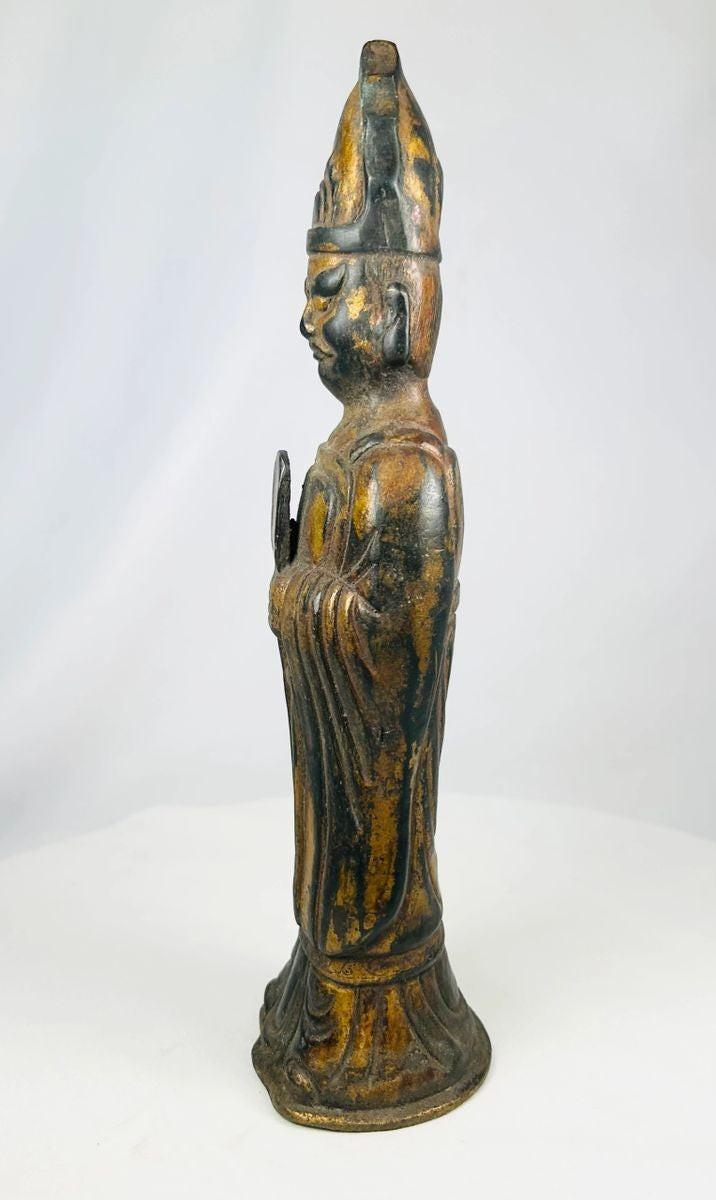Tibetan Lama | Gilt Bronze Figure | Qing Dynasty | Circa 19th Century
Description
More
Less
Historical Context & Origin
Region: Tibet
Material: Cast bronze with remnants of gilt and lacquer
Period: Late Qing Dynasty (19th Century, circa 1800s)
Description
This finely cast bronze figure represents a Tibetan Lama or high-ranking Buddhist master, depicted with a stern and authoritative expression. The figure wears traditional monastic robes and a distinctive peaked ceremonial hat, emblematic of tantric teachers within Tibetan Buddhist lineages. In one hand, the Lama holds a ritual implement—possibly a manuscript or tablet—symbolizing wisdom and spiritual authority. The stylized flared base and detailed drapery folds are characteristic of Qing-era Tibetan metalwork.
Features
- Cast bronze with traces of original gilt and lacquer
- Boldly incised robes with flowing drapery
- Distinctive Lama’s hat, signifying spiritual rank
- Stern, expressive facial features
- Rounded flared base typical of late Qing craftsmanship
Cultural Significance
Figures of Lamas were integral to Tibetan Buddhist shrines, serving as focal points of veneration. They symbolized the transmission of esoteric teachings and embodied the master-disciple relationship central to Vajrayana practice. Such images were used in both personal devotion and monastic ritual, reinforcing the sacred authority of spiritual teachers.
Condition
Good antique condition with expected age-related wear. Surface shows patina, oxidation, and loss of gilding consistent with ritual handling. Structurally stable with no cracks or modern repairs.
Dimensions (approximate)
Height: 10 in
Age
Approximately 150–200 years old (Late Qing Dynasty, 19th Century)
Description
Historical Context & Origin
Region: Tibet
Material: Cast bronze with remnants of gilt and lacquer
Period: Late Qing Dynasty (19th Century, circa 1800s)
Description
This finely cast bronze figure represents a Tibetan Lama or high-ranking Buddhist master, depicted with a stern and authoritative expression. The figure wears traditional monastic robes and a distinctive peaked ceremonial hat, emblematic of tantric teachers within Tibetan Buddhist lineages. In one hand, the Lama holds a ritual implement—possibly a manuscript or tablet—symbolizing wisdom and spiritual authority. The stylized flared base and detailed drapery folds are characteristic of Qing-era Tibetan metalwork.
Features
- Cast bronze with traces of original gilt and lacquer
- Boldly incised robes with flowing drapery
- Distinctive Lama’s hat, signifying spiritual rank
- Stern, expressive facial features
- Rounded flared base typical of late Qing craftsmanship
Cultural Significance
Figures of Lamas were integral to Tibetan Buddhist shrines, serving as focal points of veneration. They symbolized the transmission of esoteric teachings and embodied the master-disciple relationship central to Vajrayana practice. Such images were used in both personal devotion and monastic ritual, reinforcing the sacred authority of spiritual teachers.
Condition
Good antique condition with expected age-related wear. Surface shows patina, oxidation, and loss of gilding consistent with ritual handling. Structurally stable with no cracks or modern repairs.
Dimensions (approximate)
Height: 10 in
Age
Approximately 150–200 years old (Late Qing Dynasty, 19th Century)
You May Also Like




























